Abstract
OBJECTIVE: To identify the characteristics of cost-effective inpatient substance abuse treatment programs. DATA SOURCES/STUDY SETTING: A survey of program directors and cost and discharge data for study of 38,863 patients treated in 98 Veterans Affairs treatment programs. STUDY DESIGN: We used random-effects regression to find the effect of program and patient characteristics on cost and readmission rates. A treatment was defined as successful if the patient was not readmitted for psychiatric or substance abuse care within six months. PRINCIPAL FINDINGS: Treatment was more expensive when the program was smaller, or had a longer intended length of stay (LOS) or a higher ratio of staff to patients. Readmission was less likely when the program was smaller or had longer intended LOS; the staff to patient ratio had no significant effect. The average treatment cost $3,754 with a 75.0% chance of being effective, a cost-effectiveness ratio of $5,007 per treatment success. A 28-day treatment program was $860 more costly and 3.3% more effective than a 21-day program, an incremental cost-effectiveness of $26,450 per treatment success. Patient characteristics did not affect readmission rates in the same way they affected costs. Patients with a history of prior treatment were more likely to be readmitted but their subsequent stays were less costly. CONCLUSIONS: A 21-day limit on intended LOS would increase the cost-effectiveness of treatment programs. Consolidation of small programs would reduce cost, but would also reduce access to treatment. Reduction of the staff to patient ratio would increase the cost-effectiveness of the most intensively staffed programs.
Full text
PDF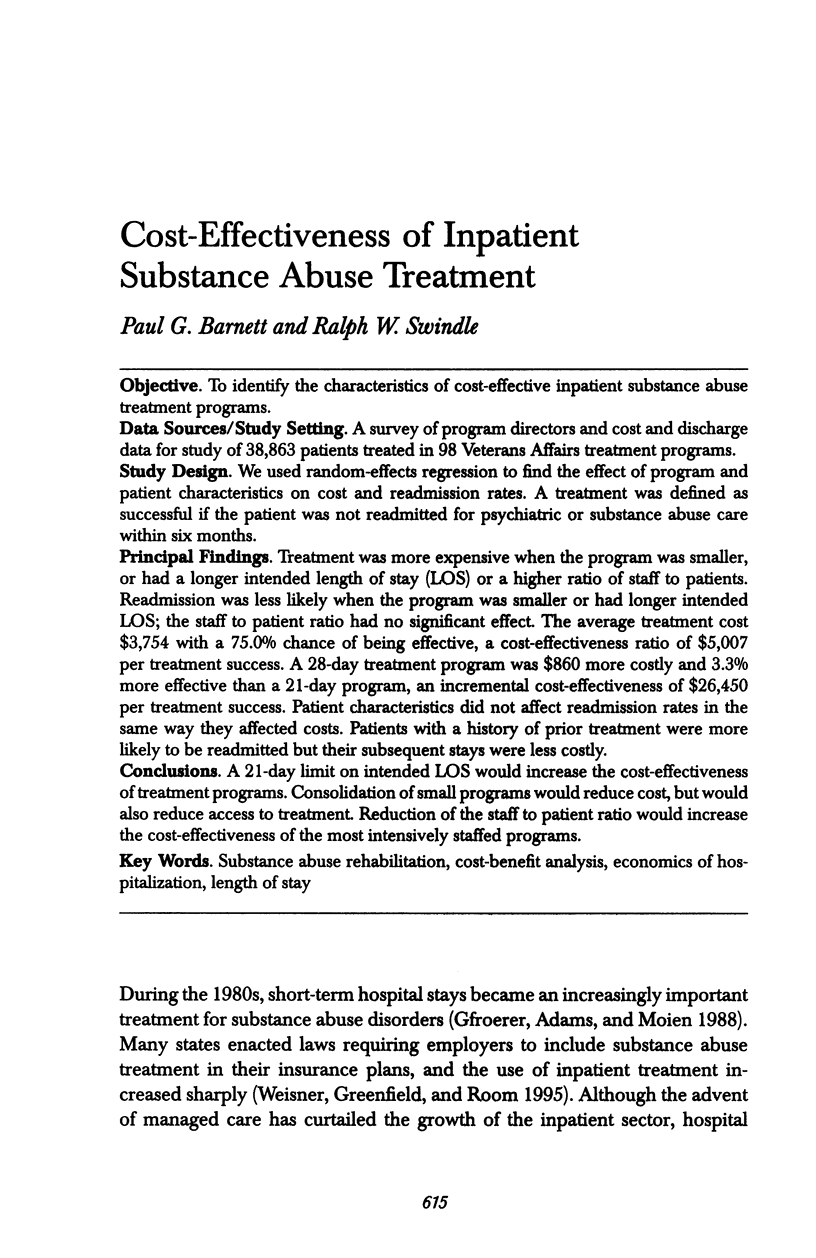
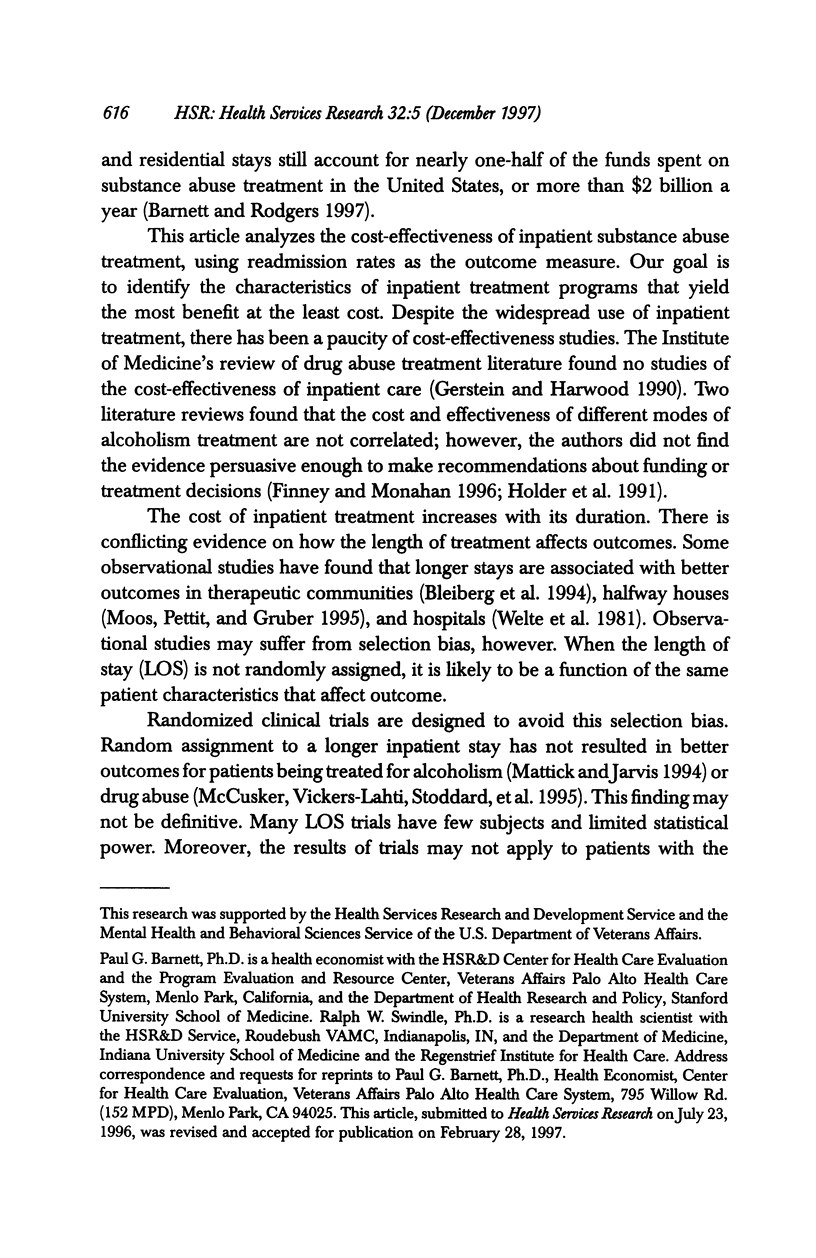
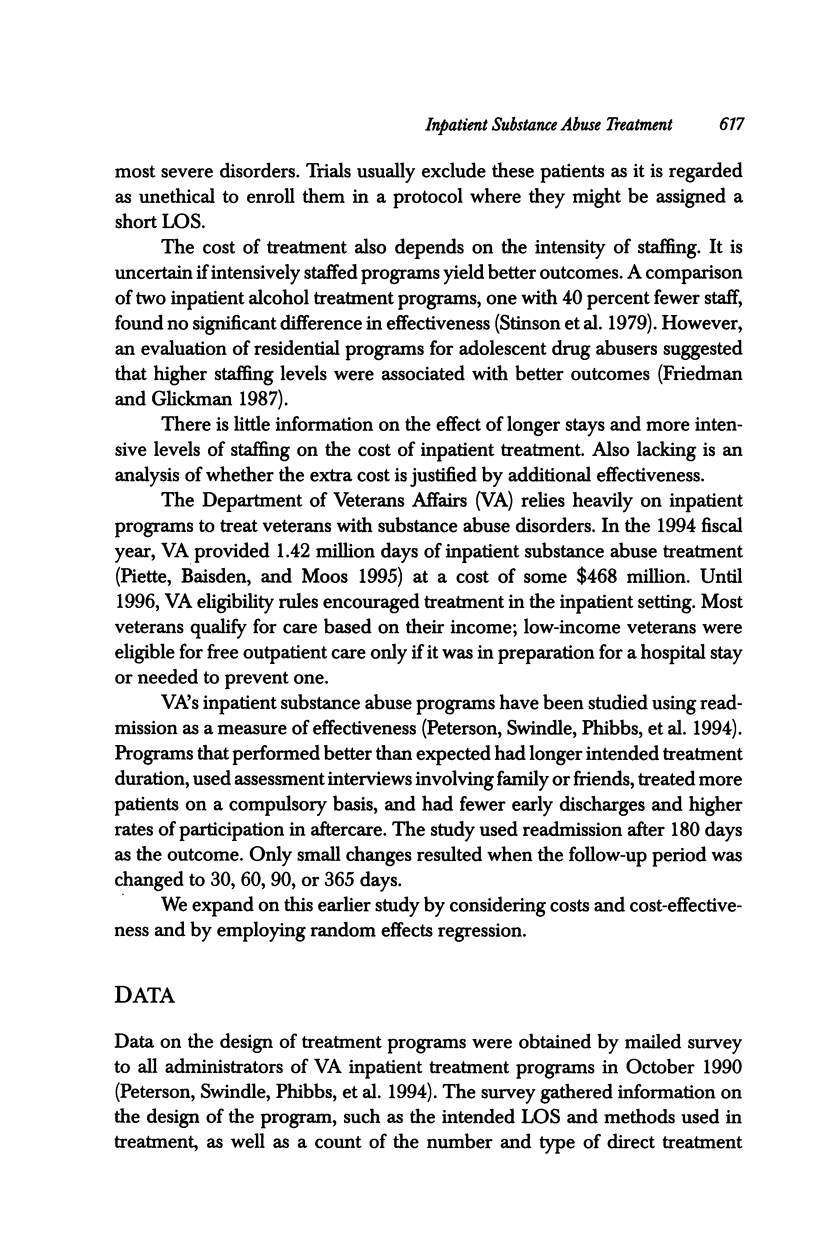
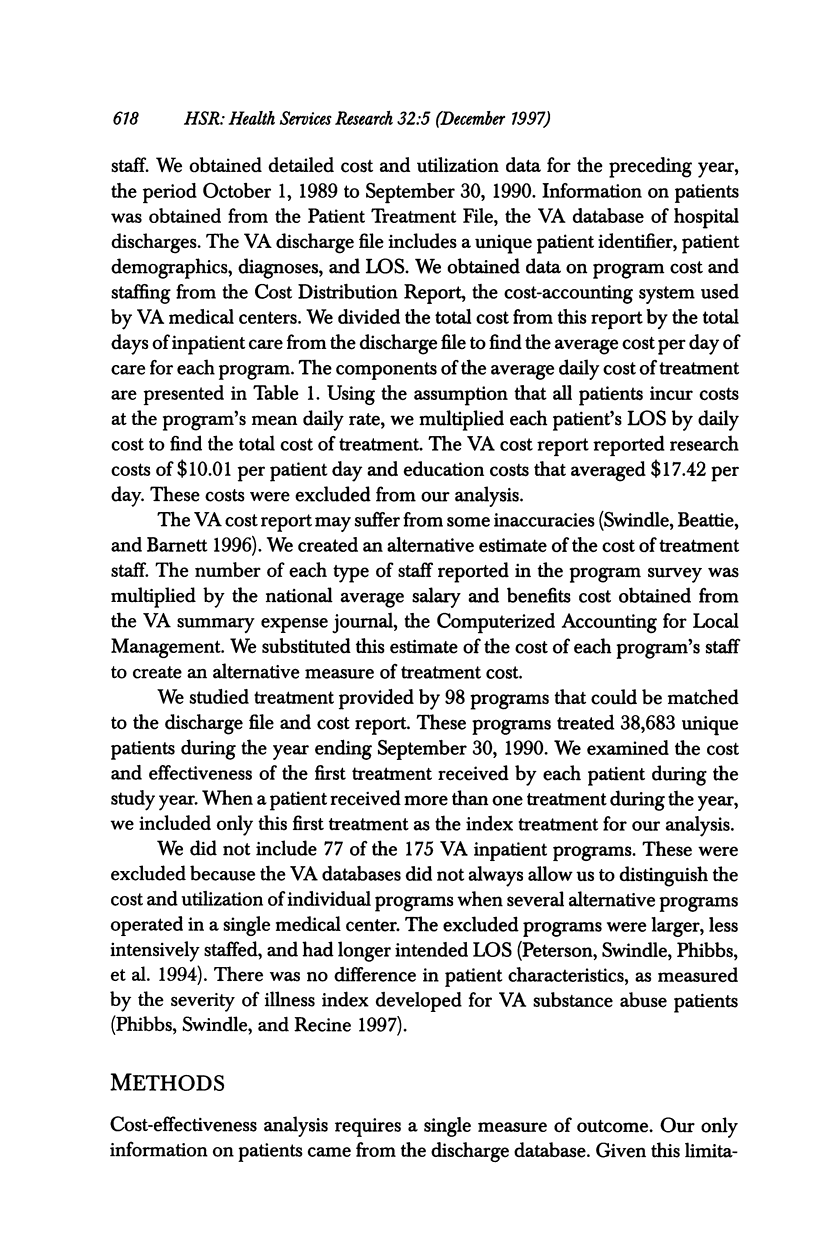
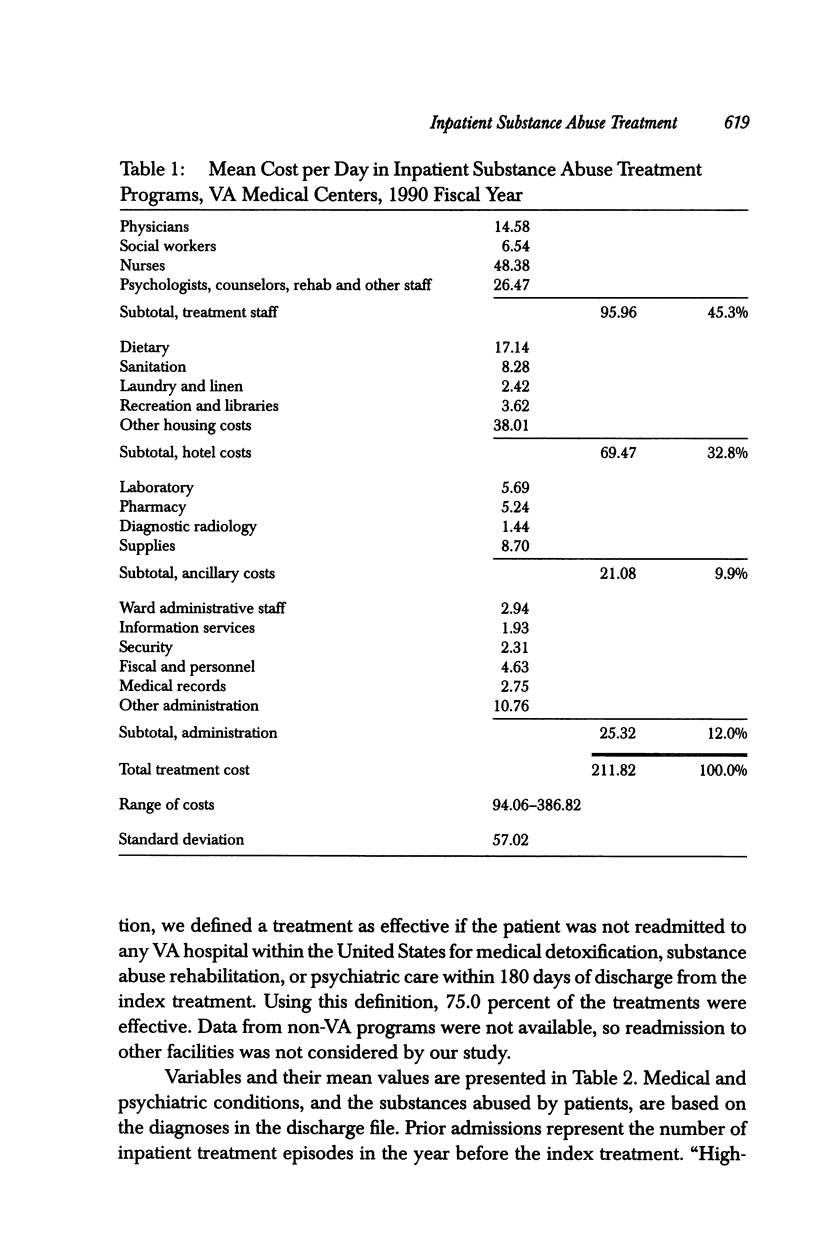
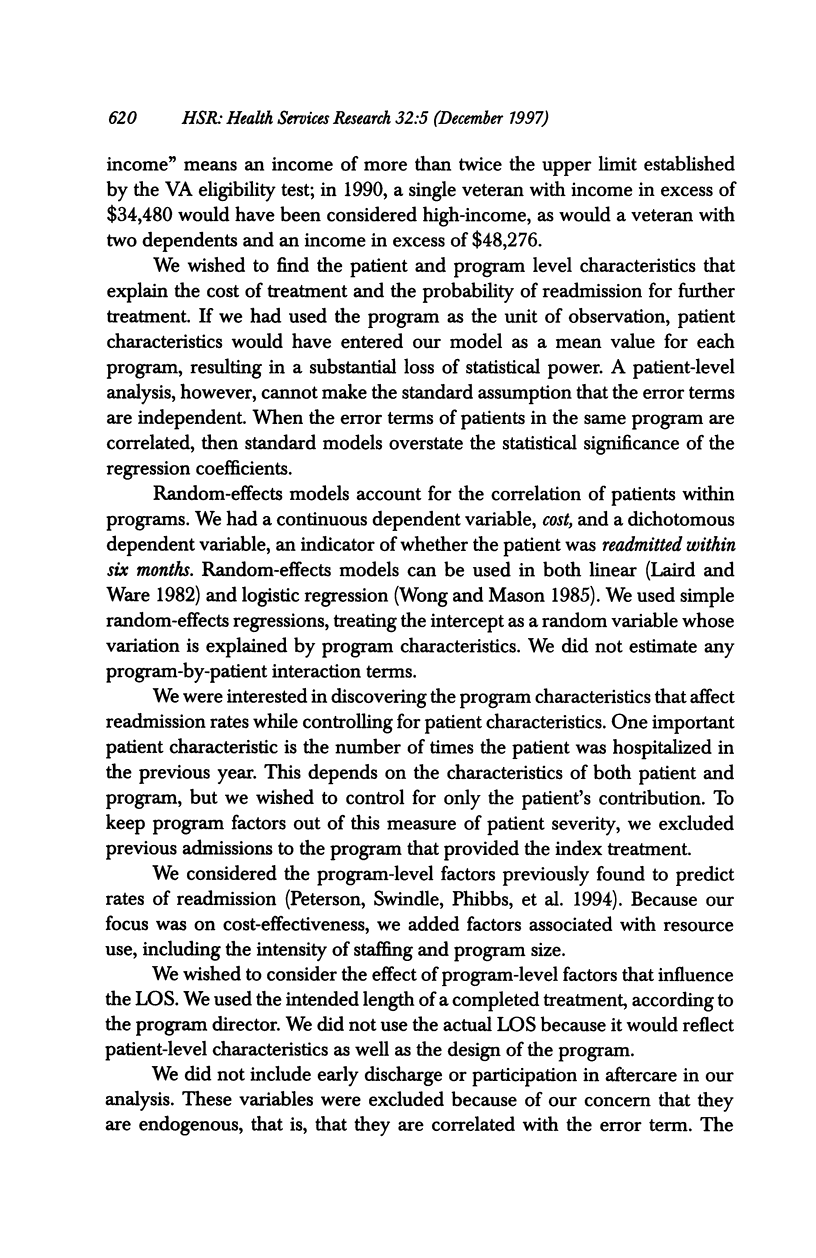
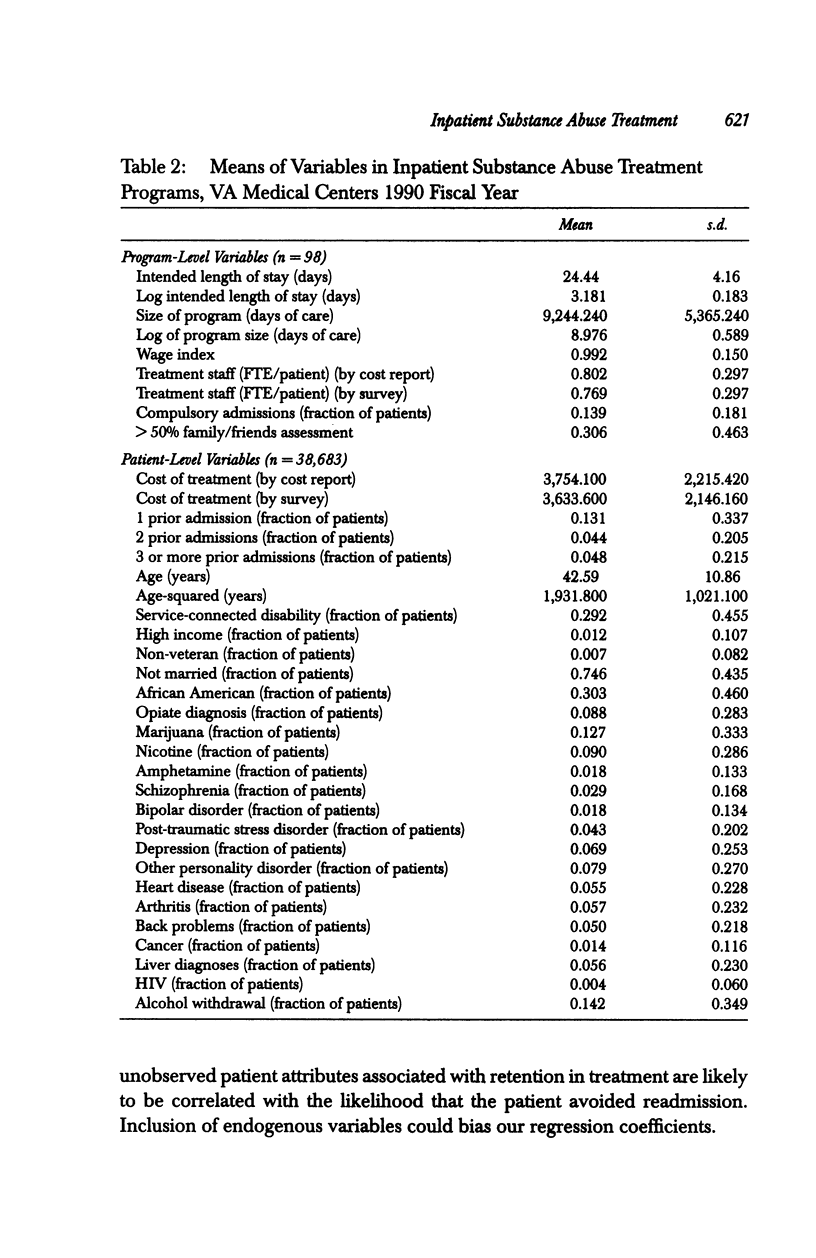
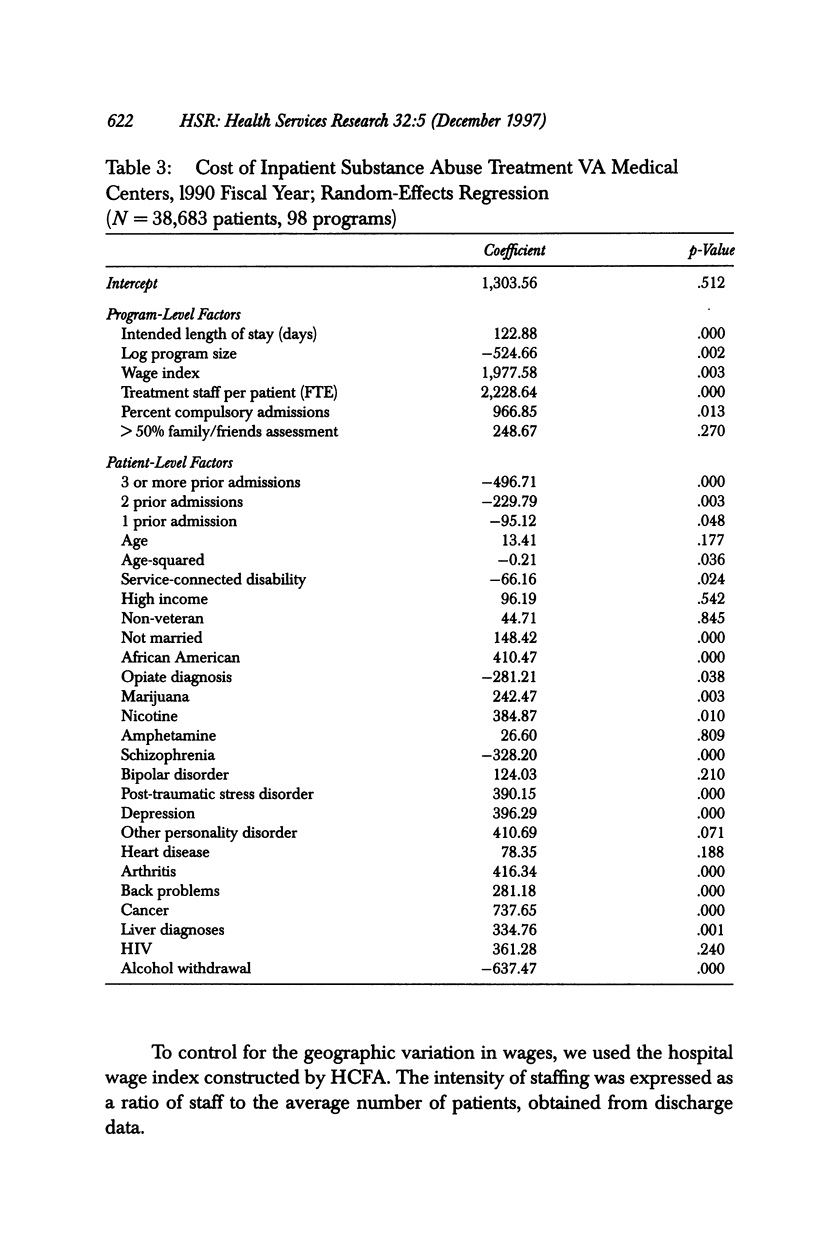
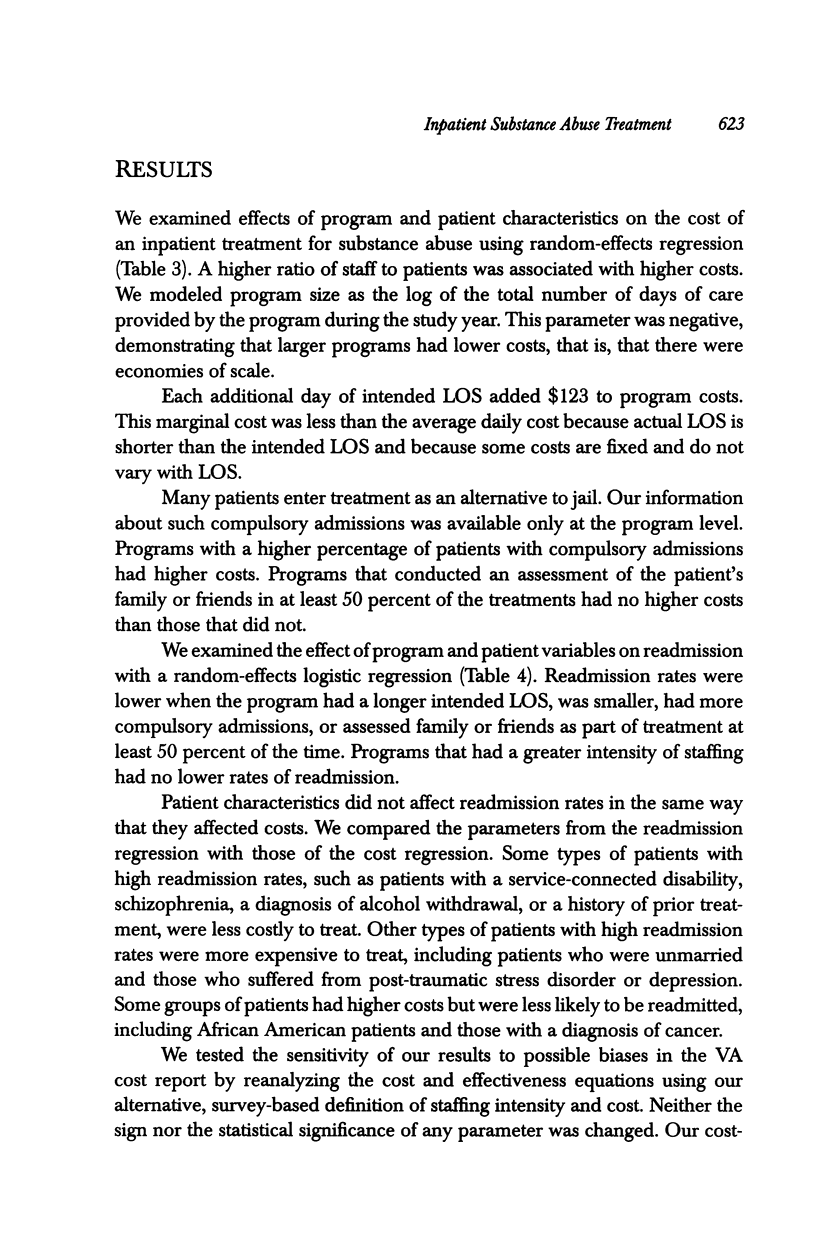
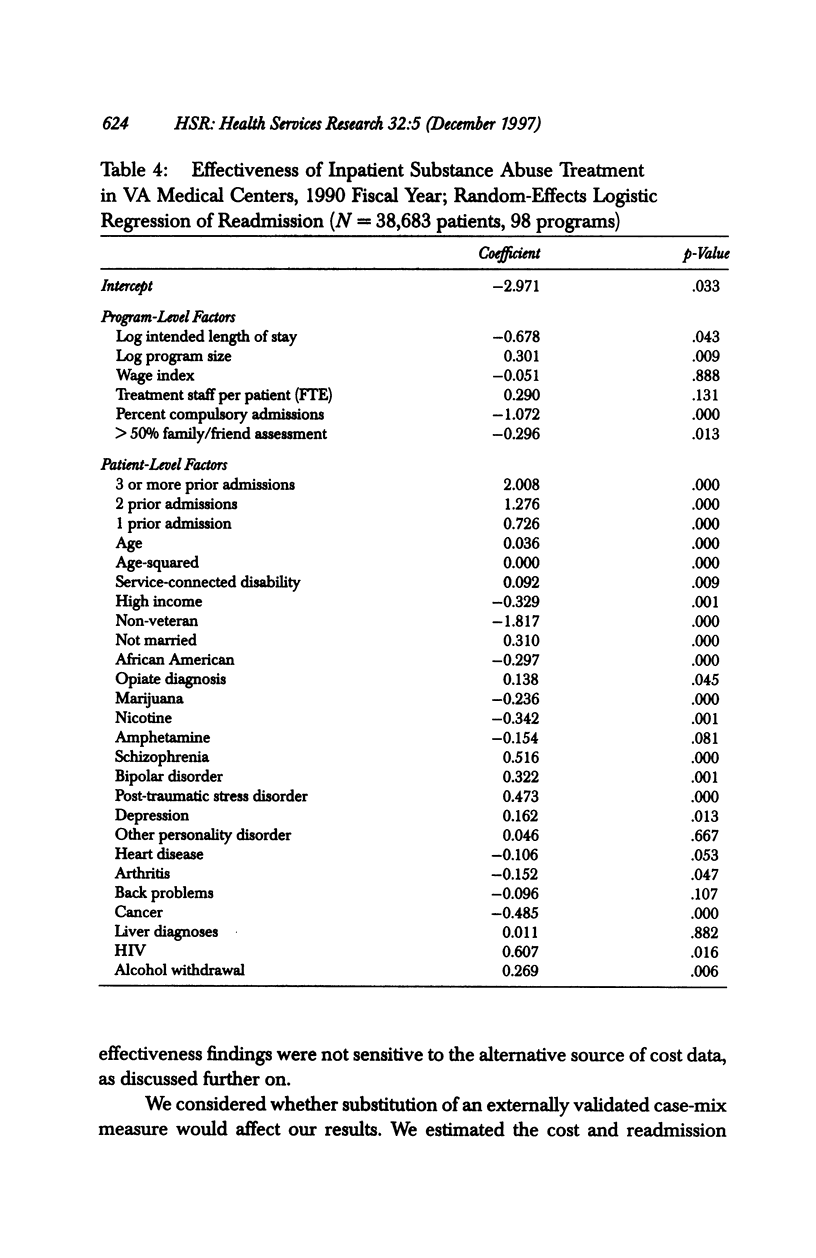
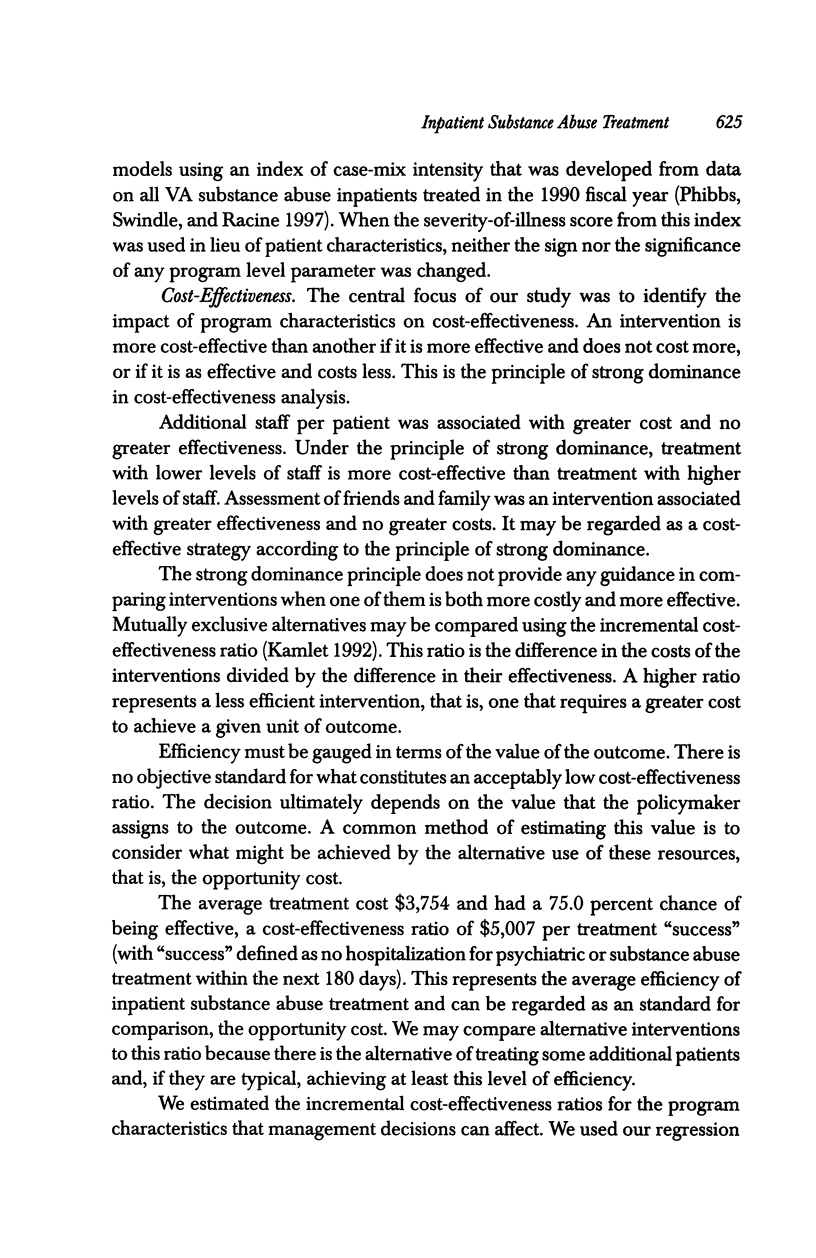
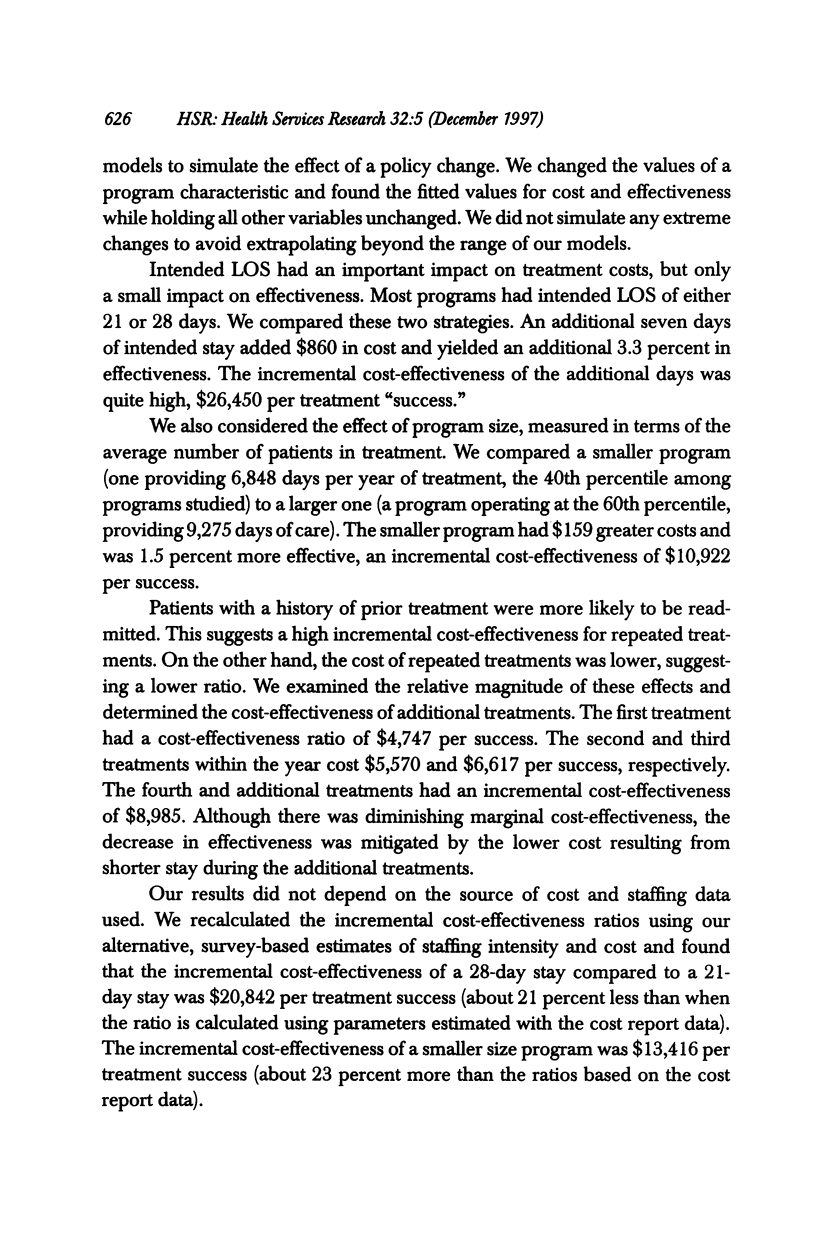

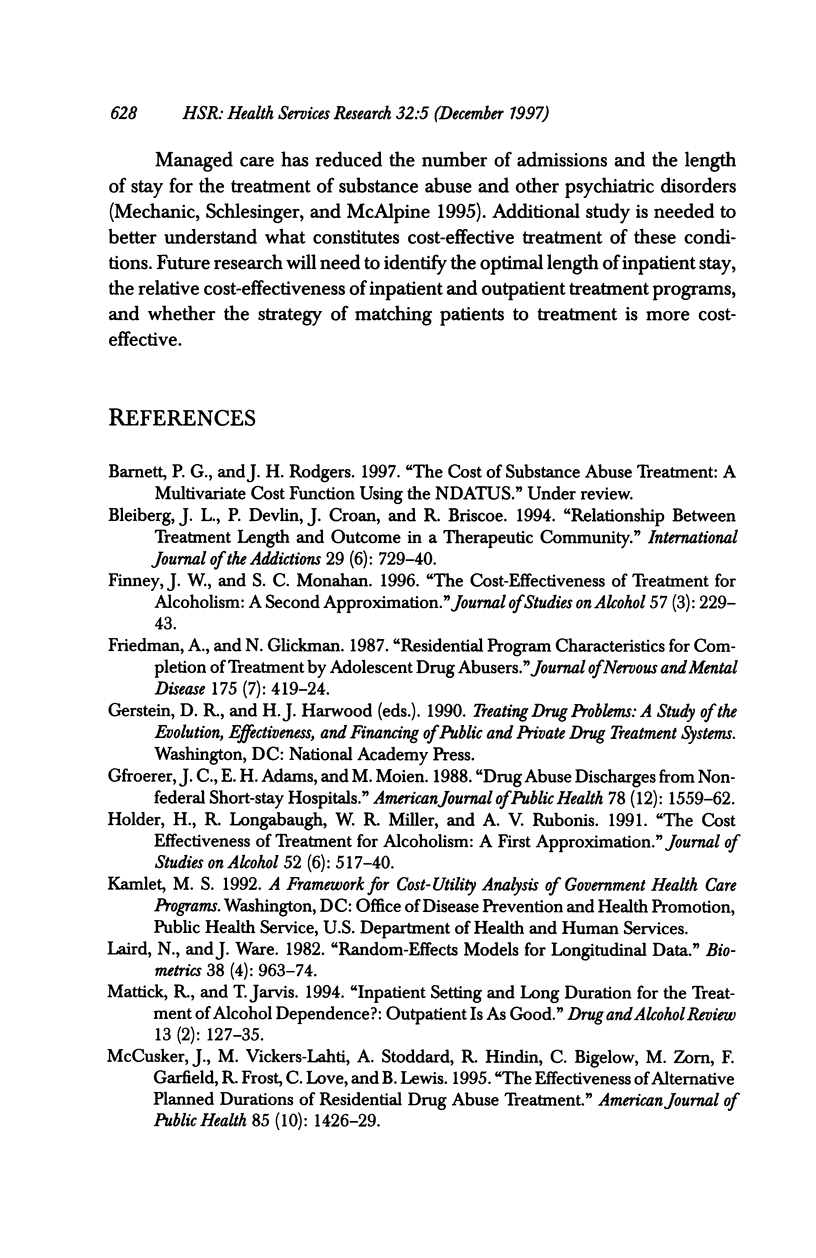
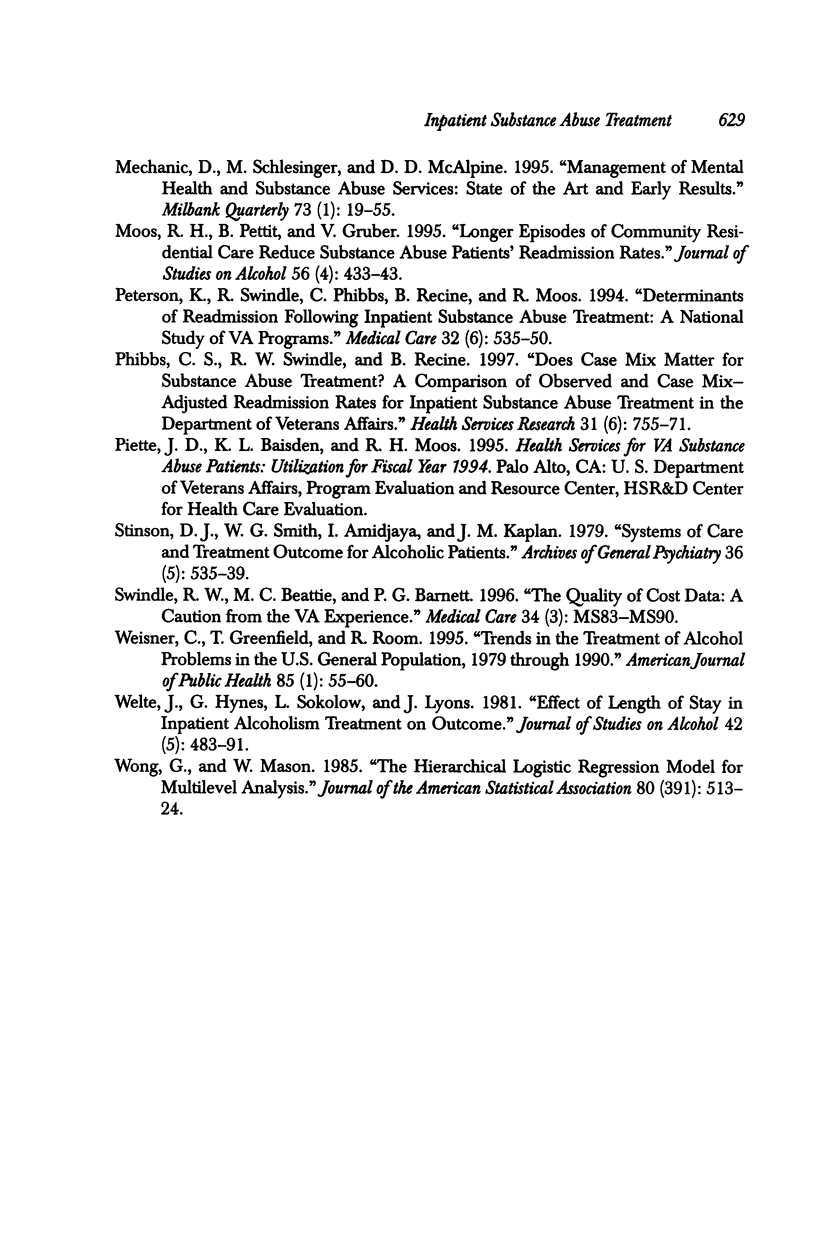
Selected References
These references are in PubMed. This may not be the complete list of references from this article.
- Bleiberg J. L., Devlin P., Croan J., Briscoe R. Relationship between treatment length and outcome in a therapeutic community. Int J Addict. 1994 Apr;29(6):729–740. doi: 10.3109/10826089409047906. [DOI] [PubMed] [Google Scholar]
- Finney J. W., Monahan S. C. The cost-effectiveness of treatment for alcoholism: a second approximation. J Stud Alcohol. 1996 May;57(3):229–243. doi: 10.15288/jsa.1996.57.229. [DOI] [PubMed] [Google Scholar]
- Friedman A. S., Glickman N. W. Residential program characteristics for completion of treatment by adolescent drug abusers. J Nerv Ment Dis. 1987 Jul;175(7):419–424. doi: 10.1097/00005053-198707000-00005. [DOI] [PubMed] [Google Scholar]
- Gfroerer J. C., Adams E. H., Moien M. Drug abuse discharges from non-federal short-stay hospitals. Am J Public Health. 1988 Dec;78(12):1559–1562. doi: 10.2105/ajph.78.12.1559. [DOI] [PMC free article] [PubMed] [Google Scholar]
- Holder H., Longabaugh R., Miller W. R., Rubonis A. V. The cost effectiveness of treatment for alcoholism: a first approximation. J Stud Alcohol. 1991 Nov;52(6):517–540. doi: 10.15288/jsa.1991.52.517. [DOI] [PubMed] [Google Scholar]
- Laird N. M., Ware J. H. Random-effects models for longitudinal data. Biometrics. 1982 Dec;38(4):963–974. [PubMed] [Google Scholar]
- Mattick R. P., Jarvis T. In-patient setting and long duration for the treatment of alcohol dependence? Out-patient care is as good. Drug Alcohol Rev. 1994;13(2):127–135. doi: 10.1080/09595239400185201. [DOI] [PubMed] [Google Scholar]
- McCusker J., Vickers-Lahti M., Stoddard A., Hindin R., Bigelow C., Zorn M., Garfield F., Frost R., Love C., Lewis B. The effectiveness of alternative planned durations of residential drug abuse treatment. Am J Public Health. 1995 Oct;85(10):1426–1429. doi: 10.2105/ajph.85.10.1426. [DOI] [PMC free article] [PubMed] [Google Scholar]
- Mechanic D., Schlesinger M., McAlpine D. D. Management of mental health and substance abuse services: state of the art and early results. Milbank Q. 1995;73(1):19–55. [PubMed] [Google Scholar]
- Moos R. H., Pettit B., Gruber V. Longer episodes of community residential care reduce substance abuse patients' readmission rates. J Stud Alcohol. 1995 Jul;56(4):433–443. doi: 10.15288/jsa.1995.56.433. [DOI] [PubMed] [Google Scholar]
- Peterson K. A., Swindle R. W., Phibbs C. S., Recine B., Moos R. H. Determinants of readmission following inpatient substance abuse treatment: a national study of VA programs. Med Care. 1994 Jun;32(6):535–550. doi: 10.1097/00005650-199406000-00001. [DOI] [PubMed] [Google Scholar]
- Phibbs C. S., Swindle R. W., Recine B. Does case mix matter for substance abuse treatment? A comparison of observed and case mix-adjusted readmission rates for inpatient substance abuse treatment in the Department of Veterans Affairs. Health Serv Res. 1997 Feb;31(6):755–771. [PMC free article] [PubMed] [Google Scholar]
- Stinson D. J., Smith W. G., Amidjaya I., Kaplan J. M. Systems of care and treatment outcomes for alcoholic patients. Arch Gen Psychiatry. 1979 May;36(5):535–539. doi: 10.1001/archpsyc.1979.01780050045004. [DOI] [PubMed] [Google Scholar]
- Swindle R. W., Jr, Beattie M. C., Barnett P. G. The quality of cost data. A caution from the Department of Veterans Affairs experience. Med Care. 1996 Mar;34(3 Suppl):MS83–MS90. doi: 10.1097/00005650-199603001-00008. [DOI] [PubMed] [Google Scholar]
- Weisner C., Greenfield T., Room R. Trends in the treatment of alcohol problems in the US general population, 1979 through 1990. Am J Public Health. 1995 Jan;85(1):55–60. doi: 10.2105/ajph.85.1.55. [DOI] [PMC free article] [PubMed] [Google Scholar]
- Welte J., Hynes G., Sokolow L., Lyons J. P. Effect of length of stay in inpatient alcoholism treatment on outcome. J Stud Alcohol. 1981 May;42(5):483–491. doi: 10.15288/jsa.1981.42.483. [DOI] [PubMed] [Google Scholar]


